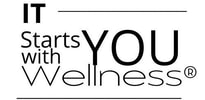2.3 (J) Detect and Deflect
How to Detect the Signs of Anxiety:
As I continue to state, our bodies are all different, so each of us will experience anxiety in our own ways. As you continue to practice the exercises within this program, you will start to not only understand your body better, but you will be able to notice how your body changes as you are experiencing anxiety.
-Each time you feel anxious, start to really sit with yourself and notice how you are feeling, both physically and emotionally.
-Try to pinpoint WHERE in the body you are feeling sensations. (the belly, the hands, arms, etc)
-Notice what physical changes occur. (do you sweat, heart rate increases, feel nauseous, shake, cloudiness in the head, etc).
Try to act like an outside observer looking in, as to keep you from bringing judgment onto yourself. The more accurate the observations, the easier it becomes to recognize, and therefore, change aspects of your own behavior.
Write down all that you experience, each time, as you will start to recognize a pattern of sensations. This is very important for people who experience panic attacks.
The earlier you can detect the body getting ready for an attack, the more time you have to deflect, and even prevent one from occurring.
As I continue to state, our bodies are all different, so each of us will experience anxiety in our own ways. As you continue to practice the exercises within this program, you will start to not only understand your body better, but you will be able to notice how your body changes as you are experiencing anxiety.
-Each time you feel anxious, start to really sit with yourself and notice how you are feeling, both physically and emotionally.
-Try to pinpoint WHERE in the body you are feeling sensations. (the belly, the hands, arms, etc)
-Notice what physical changes occur. (do you sweat, heart rate increases, feel nauseous, shake, cloudiness in the head, etc).
Try to act like an outside observer looking in, as to keep you from bringing judgment onto yourself. The more accurate the observations, the easier it becomes to recognize, and therefore, change aspects of your own behavior.
Write down all that you experience, each time, as you will start to recognize a pattern of sensations. This is very important for people who experience panic attacks.
The earlier you can detect the body getting ready for an attack, the more time you have to deflect, and even prevent one from occurring.
